Marv Wolfman
Brooklyn-born Marv Wolfman is a writer best known as a writer of comic books, including The New Teen Titans, Tomb of Dracula, and Crisis on Infinate Earths,.
Marv was active in comic book fandom before breaking into professional comics at DC in 1968 with his friend and frequent collaborator Len Wein.
When Marv first began working for DC Comics, he received DC’s first writing credit on their mystery magazines. In those days Gerry Conway wrote pages between the actual stories which had the book’s hosts tell you what was coming up. In one, knowing Marv wrote the next story, he wrote that the following story was told to him by a wandering Wolfman. The comics code, which did not permit the mention of werewolves or wolfmen at the time, demanded it be removed. DC informed the code organization that the Wolfman in question was the name of the author, so the code insisted that he be given a credit to show that the Wolfman in question was a real person and not a monster. Once Marv was given a credit, the other writers demanded them, too. Soon, credits were routinly given to all writers and artists.
In 1974 Marv Wolfman and Len Wein moved to Marvel Comics as protégés of then-editor Roy Thomas. When Thomas stepped down, Len and Marv took over as editors. Initially Len was in charge of the color comics and Marv the black and white titles. After about a year, Marv succeeded Len as editor-in-chief of the color line. One innovation which Marv instituted was the “warehouse story”; when writers and artists missed deadlines, it cost Marvel a great deal of money to delay the release of a scheduled issue, and using reprints to tread water wasn’t as appealing to readers. So, Marv had various creative teams produce complete stories for various titles, which were then stored for possible later use if a book went off schedule, allowing the editor to keep the book on track with an entirely original story that wouldn’t alienate readers.
Because Marvel was producing an ever-expanding line of comics, Marv found it difficult to both supervise their titles and still write comics. He opted to step down as editor-in-chief in order to spend more time editing and writing.
While at Marvel Marv wrote lengthy runs of Amazing Spider-Man (where he co-created the Black Cat); Fantastic Four; and Doctor Strange and created the space-faring hero Nova.
His work on Tomb of Dracula with artist Gene Colan became one of the high points of the 1970’s horror trend in comics. Taking Bram Stoker’s basic story, Marv created his own vampire mythology and introduced a set of new characters, including Blade.
In 1980, Marv returned to DC where with penciller George Pérez he relaunched DC’s Teen Titans. The New Teen Titans added the Wolfman-Pérez creations Raven, Starfire and Cyborg to the old team’s Robin, Wonder Girl, Kid Flash and Beast Boy (renamed Changeling). The series became DC’s first new hit in years, and its first serious competitor to Marvel since the early 1970s.
In 1985, Marv and George Pérez launched Crisis on Infinite Earths, a 12-issue limited series celebrating DC’s 50th anniversary. Featuring a cast of thousands and a timeline that ranged from the beginning of the universe to the end of time, it killed scores of characters, integrated a number of heroes from other companies to DC continuity, and re-wrote 50 years of DC universe history in order to streamline it.
Marv was also involved in the “post-Crisis” relaunch of the Superman line, reinventing nemesis Lex Luthor and initially scripting the Adventures of Superman title.
Marv spent much of the late 1980s and early 1990s working in animation, on series including Reboot, Transformers: Beast Machines, and Superman.
In the 1990s Marv began writing in comics again, scripting Defexx, the flagship title of Devil’s Due Productions’s Aftermath line. He also wrote an “Infinite Crisis” issue of DC’s “Secret Files”, and consulted with writer Geoff Johns on several issues of The Teen Titans.
Marv also wrote a novel based on Crisis on Infinite Earths, but rather than following the original plot, he created a new story starring the Barry Allen Flash that takes place during the original Crisis story. Marv wrote the novelization of the film Superman Returns, and worked on a direct-to-video animated movie, Condor, for Stan Lee’s Pow Entertainment.
In 2006, Marv was editorial director of Impact Comics, publisher of educational manga-style comics for high school students.
Also in 2006, Marv returned to familiar territory as writer of Nightwing for DC. He is also currently working on a direct-to-DVD movie adaptation of the popular “Judas Contract” storyline from his tenure with George Perez on The New Teen Titans.
In 2007, Marv’s 120-page graphic novel Homeland: The Illustrated History of the State of Israel (illustrated by Mario Ruiz) was released by Valor Comics, and has already won two prestigious awards. Marv’s Superman Returns novelization won the first Scribe Award (an industry award given by fellow writers) for adapted novelization.
Visit Marv’s official site at www.marvwolfman.com.
Len Wein
Len Wein is a New York City born comic book writer and editor best known for co-creating DC Comics’ Swamp Thing and Marvel Comics’ Wolverine, and for helping revive the Marvel superhero team the X-Men.
Len’s first professional comics story was “Eye of the Beholder” in DC’s Teen Titans #18 (Dec. 1968), where with co-writer and fellow future-pro Marv Wolfman he introduced the male character Starfire who was eventually renamed Red Star. Late the following year, Len was publishing anthological mystery stories for DC’s The House of Secrets and Marvel’s Tower of Shadows and Chamber of Darkness. He additionally began writing for DC’s romance comic Secret Hearts and the company’s toy-line tie-in Hot Wheels; Skywald Publications’ horror-comics magazines Nightmare and Psycho and its short-lived Western comic books The Bravados and The Sundance Kid; and Gold Key’s Mod Wheels, Boris Karloff Tales of Mystery, the toyline tie-in Microbots, and the TV-series tie-ins Star Trek and The Twilight Zone.
Len’s first superhero work for Marvel was a one-off story in Daredevil #71 (Dec. 1970) co-written with staff writer/editor Roy Thomas. Len later began scripting sporadic issues of such DC superhero titles as Adventure Comics (featuring Supergirl and Zatanna), The Flash, and Superman, while continuing to write anthological mysteries, along with well-received stories for the semi-anthological occult title The Phantom Stranger #14-26 (Aug. 1971 – Sept. 1973).
Len and artist Bernie Wrightson (guest of honor at CONvergence 2007) created the horror character Swamp Thing in The House of Secrets #92 (July 1971). Over the next several decades, Swamp Thing would star in DC series and miniseries – including an initial 1972-76 series begun by Len and Bernie, and the mid-1980s Saga of the Swamp Thing, edited by Len and featuring early work by writer Alan Moore – as well as two theatrical films, and a syndicated television series. He wrote a well-regarded run of Justice League of America (issues #100-118) with artist Dick Dillin. He co-created, with artist Carmine Infantino, and wrote the backup feature “The Human Target” in Action Comics, Detective Comics and The Brave and the Bold.
In the early 1970s, Len began writing regularly for Marvel Comics. He succeeded Roy Thomas as editor-in-chief of the color-comics line in 1974, staying a little over a year before handing the reins to Marv Wolfman. Remaining at Marvel as a writer, Len had lengthy runs on Marvel Team-Up, The Amazing Spider-Man, The Incredible Hulk, The Mighty Thor and Fantastic Four, as well as shorter runs on such titles as The Defenders and Brother Voodoo. In 1975, he and artist Dave Cockrum revived the Stan Lee / Jack Kirby mutant-superhero team the X-Men after a half-decade’s hiatus, reformatting the membership. Among the characters the duo created were Nightcrawler, Storm, Colossus, and Thunderbird; Wein had additionally created Wolverine earlier, with artists John Romita Sr. and Herb Trimpe, in The Incredible Hulk. Wein plotted the next two X-Men stories with artist Cockrum. These issues were then scripted by Chris Claremont, who developed the series into one of Marvel’s leading franchises.
At the end of the 1970s, Len returned to DC as a writer and then eventually an editor. He scripted a long run of Batman and collaborated on Green Lantern with artists Dave Gibbons and Mark Farmer. He also dialogued the mini-series Legends over the plots of John Ostrander and the artwork of John Byrne and Karl Kesel. As editor, he worked on the first mini-series Camelot 3000, and such successful series as The New Teen Titans, Batman and the Outsiders, Crisis on Infinite Earths, All-Star Squadron, and Alan Moore and artist Dave Gibbons’s acclaimed and highly influential Watchmen miniseries. Wein later wrote a Blue Beetle revival, scripted a revamped Wonder Woman over penciller George Perez’s plots, and created the superhero Gunfire with artist Steve Erwin.
Following his second stint at DC and a move to the West Coast, Len served as editor-in-chief of Disney Comics for three years in the early 1990s. After leaving Disney, Len began writing and story editing for such animated television series as X-Men, Batman, Spider-Man, Street Fighter, ExoSquad, Phantom 2040, Godzilla, Pocket Dragon Adventures, Reboot and War Planets: Shadow Raiders. In 2001, he and Marv Wolfman wrote the screenplay “Gene Pool” for the production company Helkon, and later adapted it for a one-shot comic book for IDW Publishing. In September 2004, Len completed a script for a Swamp Thing feature for Silver Pictures at Warner Bros. Through 2005-07, Len appeared frequently as a panelist on the Los Angeles theatre version of the TV game show What’s My Line, and in 2006, collaborated with writer Kurt Busiek and artist Kelley Jones on the four-issue miniseries Conan: The Book of Thoth for Dark Horse Comics. He has also scripted the comics series The Victorian for Penny-Farthing Press and has written comic-book stories for Bongo Comics’ TV-series tie-ins The Simpsons and Futurama.
Read Len Wein’s blog at http://lenwein.blogspot.com/.
Mercedes Lackey
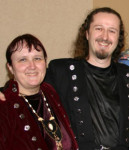 Mercedes Lackey says she was introduced to science fiction at the age 10 or 11, when she happened to pick up her father’s copy of James H. Schmitz’s Agent of Vega. She followed this with Andre Norton’s Beast Master and Lord of Thunder, and continued to read all of Norton’s works. She wrote for herself but without real direction or purpose until she attended Purdue University, where she took a one-on-one class of English Literature Independent Studies with a professor who was a fellow science fiction fan. He helped her analyze books she enjoyed and then use that knowledge. Mercedes then encountered fan fiction, which further encouraged her writing. She began publishing work in fanzines, and then discovered filk and had some filk lyrics published by Off Centaur Publications. Mercdes submitted a story to Sword and Sorceress, then sold the rewritten story to Fantasy Book Magazine. Her first sale was to Friends of Darkover.
Mercedes Lackey says she was introduced to science fiction at the age 10 or 11, when she happened to pick up her father’s copy of James H. Schmitz’s Agent of Vega. She followed this with Andre Norton’s Beast Master and Lord of Thunder, and continued to read all of Norton’s works. She wrote for herself but without real direction or purpose until she attended Purdue University, where she took a one-on-one class of English Literature Independent Studies with a professor who was a fellow science fiction fan. He helped her analyze books she enjoyed and then use that knowledge. Mercedes then encountered fan fiction, which further encouraged her writing. She began publishing work in fanzines, and then discovered filk and had some filk lyrics published by Off Centaur Publications. Mercdes submitted a story to Sword and Sorceress, then sold the rewritten story to Fantasy Book Magazine. Her first sale was to Friends of Darkover.
Mercedes met C. J. Cherryh, who mentored her during the writing of her ‘Arrows’ series. During this time, Marion Zimmer Bradley included her short stories in an anthology and Cherryh helped Mercedes through 17 rewrites of ‘Arrows’. During this time, she claims to have been writing so much that she had no social life at all.
Mercedes Lackey lives with her husband Larry Dixon outside of Tulsa, Oklahoma, in an unusual house, which she describes as a “2½-story concrete dome with an octagonal wooden shell over it to make it look more like a normal house… it’s round with curved outer walls, which makes placement of furniture kind of awkward.”
Mercedes and Larry Dixon have in the past worked in raptor rehabilitation. She often refers to her various parrots as her “feathered children”. The afterwords to some of her books refer to rehabilitation and falconry, and it is clear that this interest has influenced and informed her writing. She also enjoys beadwork, costuming, and needlework. She claims, however, to be a “wretched housekeeper, and by and large an indifferent cook.” Mercedes also does radar-reading during tornado season.
Lackey has been active in the filking community. She was a major contributor to an early album of space filk, Minus Ten and Counting. She has won 5 Pegasus Awards, mostly for her songwriting.
Music plays an important role in Mercedes’ writing, as she explains: “I frequently will write a lyric when I am attempting to get to the heart of a crucial scene; I find that when I have done so, the scene has become absolutely clear in my mind, and I can write exactly what I wanted to say. Another reason is because of the kind of novels I am writing: that is, fantasy, set in an other-world, semi-medieval atmosphere. Music is very important to medieval peoples; bards are the chief newsbringers. When I write the ‘folk music’ of these peoples, I am enriching my whole world, whether I actually use the song in the text or not.”
Book series by Mercedes Lackey include:
Bardic Voices
Elves on the Road Universe:
- Bedlam Bard series (with Ellen Guon)
- Diana Tregarde series
- The Serrated Edge series (with Larry Dixon, Mark Shepherd, and Holly Lisle)
Elemental Masters
Halfblood Chronicles (with Andre Norton)
Heirs of Alexandria
The Obsidian Mountain Trilogy
Valdemar Universe:
- Heralds of Valdemar
- Vows & Honor
- The Last Herald Mage Trilogy
- The Mage Winds Trilogy
- Kerowyn’s Tale
- The Mage Wars (with Larry Dixon)
- The Mage Storms Trilogy
- The Owl Mage Trilogy (with Larry Dixon)
- Valdemar Short Story Collections
A complete bibliography of Mercedes’ writing can be found at her personal website at http://www.mercedeslackey.com/.
James Kakalios
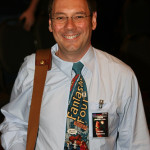 “I’ve had an amazing time…being chosen as a guest was a huge honor…Geeks rule the planet and we’re not taking any more guff from the man!”
“I’ve had an amazing time…being chosen as a guest was a huge honor…Geeks rule the planet and we’re not taking any more guff from the man!”James Kakalios is a physics professor at the University of Minnesota. Known within the scientific community for his work with amorphous semiconductors, granular materials, and 1/f noise, he is known to the general public as the author of the book The Physics of Superheroes, which considers comic book superheroes from the standpoint of fundamental physics.
Kakalios, who earned PhD from the University of Chicago in 1985, began his comic book collection as a graduate student as a way to relieve stress. At Minnesota, he taught a freshman seminar that focused on the physics of superheroes as a way to motivate students to think about physics. This course gained great popularity as an inticing alternative to the typical inclined planes and pulleys of physics.
The seminar was a great success, leading to articles in popular magazines including People, lectures on the subject, and publication of The Physics of Superheroes. First published in 2005, the book explores the basic laws of physics. Dr. Jim’s goal is not to show where the world of superheroes contradicts modern science – he grants each of the heroes one or more “miracle exceptions” from natural law; instead, he focuses on examples of comic book scenes that can be used to understand the diverse laws of physics from an unusual angle. How did Gwen Stacy die? Spider-Man obviously didn’t know enough about the effects of sudden acceleration. Can Ant-Man literally punch his way out of a paper bag? It’s a matter of physics – of levers and torque, to be precise. In this way, Kakalios covers diverse topics, from mechanics to the quantum world.
It’s a fitting venture for Dr. Jim, whose lifelong love of comic books helped cultivate his passion for science. “As a kid, comic books helped fuel my curiosity,” he recalls. In one story, his favorite hero, The Flash, lost his ability to avoid air resistance and friction. “It made me aware [that], aside from the silly notion of superpowers, there were all sorts of secondary issues associated with the ability to run superfast that I hadn’t considered.”
Convinced that comics could help make science more accessible and appealing to students of any age, Kakalios toyed for years with the notion of creating a class on the science of superheroes.
“Take Superman,” says Jim. “In his very first year, he could only leap, not fly. His skin was tough, he had great strength, all because Krypton had larger gravity than Earth. Using the hero’s ability ‘to leap over tall buildings in a single bound’ as a benchmark, the class calculated that Krypton’s gravity would have to have been six to eight times that of Earth.”
“That means Krypton had to be either six times larger or six times denser than Earth. Assuming that normal matter on Krypton obeys the laws of physics, the planet could not be six times denser than Earth. So Krypton had to be six times larger,” explains Kakalios. “But any planet that much larger than Earth would have to be a gas giant like Jupiter. Because Krypton had a solid crust supporting buildings and cities, the only other explanation for its increased gravity would be a super-dense — and unstable — material like a neutron star in its core. And that would explain why Krypton exploded.”
Dr. Jim is of the opinion that the most unrealistic aspect of the comic-book universe is often the sociology. He notes that pedestrians don’t usually provide running monologues describing everything around them. There is one aspect of the story of the Atom that he does not question, however. The Atom begins as a physics professor, who encounters a chunk of white dwarf star and picks it up. “By a conservative estimate, he is lifting about 5000 metric tons. This is not unreasonable,” Kakalios will say at the end of his talk, taking off his glasses before walking offstage. “We physics professors are just that strong.”
Website: http://www.physicsofsuperheroes.com/
Larry Dixon
Larry Dixon is the son of a Delta Force career commando, and studied at the North Carolina School of Art and Design and at Savannah College of Art & Design. In 1992, he married fantasy author Mercedes Lackey, with whom he is a frequent collaborator.Collaborations with Mercedes Lackey include:
The Mage Wars Trilogy (Baen)
The Black Gryphon (1994)
The White Gryphon (1995)
The Silver Gryphon (1996)
The SERRAted Edge Novels (Baen)
Born to Run (1992)
Chrome Circle (1994)
The Owl Trilogy (DAW)
Owlsight (1997)
Owlflight (1998)
Owlknight (1999)
Larry Dixon as an accomplished artist, having contributed artwork to Wizards of the Coast’s Dungeons & Dragons source books, including Oriental Adventures, Epic Level Handbook, and Fiend Folio. His skill with depicting birds of prey has often led to commissions with the United States Military and with Save Our American Raptors, an organization devoted to raptor rehabilitation.
Along with Mercedes Lackey, Larry works in wildlife rehabilitation, especially with birds of prey. Larry has returned over four hundred hawks, owls, falcons and corbies into the wild. He is currently working toward his falconry license with his friend Cheyenne, a horned owl.
Larry’s wildlife rehabilitation led to a minor role in the creation of the digital effects for the giant eagles in the Lord of the Rings movies. Dixon took digital photographs of a stuffed golden eagle he is currently keeping for its owner, a local tribal elder. These photographs, along with castings of the beak and talons, were sent to Weta Digital in New Zealand to provide texture mapping for the digital model for Gwaihir and company.
Larry’s official website: http://gryphonking.aelfhame.net/
Harry Knowles
Harry Jay Knowles is an online film critic known for his movie news and review website, Ain’t It Cool News.
Harry was born in Austin, Texas, the son of Helen Jane and Jarrell Jay Knowles. His early years were spent traveling the Southwest and Mexico with his parents who did light shows for touring rock bands. His parents then settled in Austin and began trading comic books and movie memorabilia from the upstairs floor of their Victorian era house. Harry’s parents also produced the Austin Fantasy Film Fest in 1976, one of the first science fiction conventions in Austin. Harry spent many hours watching B-grade horror movies as well as other genres from mostly bootlegged 16 mm prints.
In 1994, Harry fell while pushing a cart up a ramp at a convention, and was subsequently run over by the cart with its 1200 pound load of memorabilia. The accident injured his back and left him virtually bedridden. With money from his mother’s life insurance, he purchased a top-of-the-line computer and a friend arranged for Internet service allegedly so they could play Doom online together. After teaching himself how to navigate the Internet, Harry began frequenting newsgroups to exchange gossip and rumors with other fans about upcoming films.
After being chastised by future film critic Mike D’Angelo for posting binary image files to the newsgroups, Knowles launched the website that would become Ain’t It Cool News in February 1996. A principal offering was Harry’s colorful movie reviews, but the secret weapon was the insider news from a network of “spies” inside the entertainment industry. These spies were initially a fabrication to give Ain’t It Cool News’ content some flair, but later the site would attract genuine sources who wanted to retain their anonymity and so took on spy pseudonyms.
Due to the popularity, or perhaps the notoriety, of the website, Harry was sought out by the mainstream media, including magazines, newspapers, and television news programs. In 2000, he was ranked #95 in the Forbes Power List. This is in recognition of the influential power of his website. Due to his unorthodox style of journalism, Quentin Tarantino referred to Harry as “the Wolf Blitzer of the Internet.” Harry has made guest appearances on the television shows Siskel & Ebert at the Movies and Politically Incorrect.
On March 15, 2003, Knowles’s was impersonated by Horatio Sanz in a sketch on Saturday Night Live, wherein he was referred to as “that chubby guy from Ain’t It Cool News.” Knowles feigned offense on his website at being called “chubby.” “I’m morbidly obese,” he quipped on his site, “and I’ve worked hard to get there!”.
Every year since 1999, on the weekend closest to his birthday (December 11th), Harry Knowles hosts an event called the Butt-numb-a-thon; a 24-hour film festival featuring un-official premieres, and vintage films. Additionally, Harry co-programs Austin’s Fantastic Fest, an eight-day film festival focusing on the genres of horror, science fiction and fantasy. Both events are held at Alamo Drafthouse Cinemas in Austin.
Harry married Patricia Jones on July 15, 2007 at Green Pastures in Austin.
Visit Harry on line at http://www.aintitcool.com.
Jay Knowles
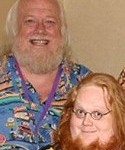 Father of Harry Knowles and Contributer to AintItCoolNews.com
Father of Harry Knowles and Contributer to AintItCoolNews.com
From Jay “Father Geek” Knowles myspace.com page:Who is Father Geek (aka J. Jay) who is to play your host on this page, this labyrinth of pixals, paper and plastic; brass, tin and heavy metal; ink, toner and paint that will overflow this electronic page over the coming weeks, months, and hopefully years. Well, I was born into a middle class family of 4th generation Texans 8 months before we dropped the bombs on Hiroshima & Nagasaki. My father was an officer in the Army Air Corp and I spent most of my first 2 years in the backseat of a cream colored 1940 Chevy traveling the great American west from one air base to another.
At age 3 we set down roots in San Antonio, home of the Alamo, The Majestic Theatre and the Buckhorn Saloon, the headquarters of the 4th & 5th Army and the “West Point of the Air”. I led that storybook, 1950’s TV family life, joined Boy Scouts and earned my Eagle with a bronze palm. I played every inning of every game thru 4 years of Little League baseball. My mother was president of the PTA and I made pretty good grades. I played in the band from 6th to 12th grade and drove a 4 door turquoise 58 Chevy my senior year.
I was the 1st of my friends to have a TV (B&W, 13″) in his bedroom (1951), and I went to alot of movies in SA’s giant single screen film palaces and at the many drive-ins around town in the days of 50 cent admissions, 5 cent bus rides, candy bars and cokes, & 10 cent hot-dogs and hamburgers. I earned my spending money by charging 50 cents an hour to do yardwork, plus 5 cents a turd to cleanup after the hundreds of dogs that freely roamed the streets. Later as a teen I opened a bicyle custom shop with a friend in his parents garage. Basically we’d take off the kickstand, chain-guard & fenders, raise the seat, turn the handlebars upside down and collect $15.00, plus keep all the parts. For another 10 bucks we’d add a paint job. No store bought bikes back then had the now common “off road look”, buuuut that’s what all the guys wanted, sooo we did a brisk business.
In 1965 I enrolled at the University of Texas in Austin and it’s been my home ever since. I had vague, but fleeting, thoughts of becoming a lawyer and I was a member of UT’s varsity debate and public speaking teams. Like most of my generation I was politically active. In Texas at that time the power had rested with the Democrats since reconstruction so the revolutionary thing to do was be a Republican. I joined their youth wing. I majored in Speech & Sociology, then Advertising. I became a professional political underling, working for candidates and in the PR dept. at Republican State Headquarters on the 7th floor of the Littlefield Building at 6th and Congress here in Austin. I was on Nixon’s staff at the 68 convention in Miami. My future wife (1860’s North Texas ranching family) was the social chairman of the political club that I was the PR man for. We started to hangout, and watch movies together. We enrolled at the UT Film school and our politics started to shift to the left.
In 1969 we formed a high-octane, mind-numbing lightshow performance company (complete with pyro effects & 20+ projectors)called “Mind’s I”, working with all the pop rockers of the day (did 40+ shows with a little ol’ band from Texas,ZZ TOP), and shooting some commercials & short musical films in 16mm for clubs around the state (way before MTV). We began collecting posters (movie & rock) & comicbooks as we traveled throughout the southern USA. Did alot of the big classic “POP FESTIVALS” from the west coast to the East.
Our Son arrived at the end of 1971 and we opened a pop culture collectibles store (N. E. Mercantile Co. Inc.) based out of Austin. We crisscrossed the country doing festivals and collector shows 25 or 30 times a year until he started public school in 2nd grade, we had begun to collect movies, cartoons, and trailers on 16mm. I bought a VCR in August of 1976. We started sculpting bronzes and setting up at “Rennie faires”, (“Leather Phantasies & Heavy Metal Realities”)and a sister came on the scene in 1981.
In 1984 we divorced after 18 years together. She got the kids. I got depressed. Life goes on and by the Spring of 1989 I had pulled myself together and my son moved in with me. We re-entered the collectibles marketplace as “Jay’s 20th Century Esoterica”. Then in 1992 my Ex died in a tragic firestorm out on the North Texas plains at Lake Kemp and I suddenly had both my kids back. What is it that Goldblum says in that big dino flick? Oh yeah, “Life finds a way.”After aintitcoolnews.com took off in the late Fall of 96 I decided to never SELL another part of our pop culture collections, no matter how high the offer, not because I’m rich (I’m far from it), but because I’d much rather have my HULK 1, or KISS ME DEADLY poster than a shoebox full of money which is much more common and far easier to come by.
Well, that’s a peek at the primal ooze that formed the bio-hard-drive that is to be your host on this page as we journey together thru the refuge of the 20th century popular culture mirror that it has been my pleasure to archive all these years.

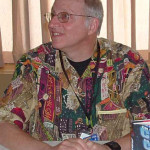
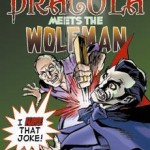
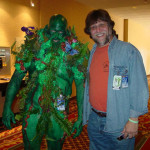
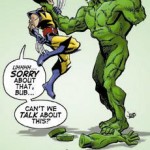
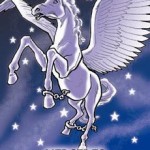
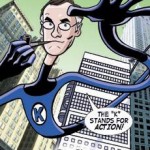

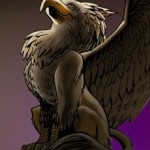
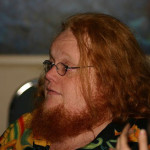
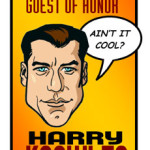

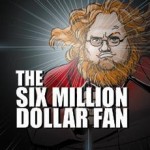
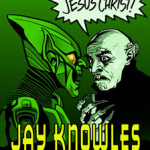
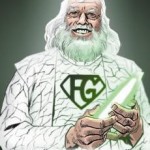
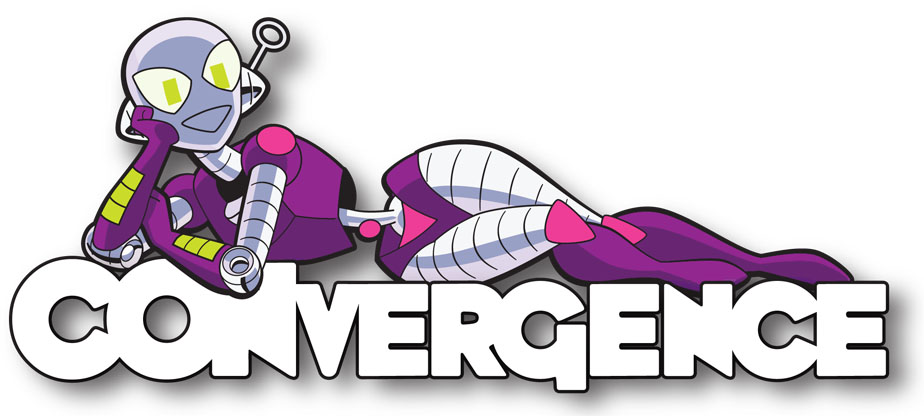

 © 2024
© 2024